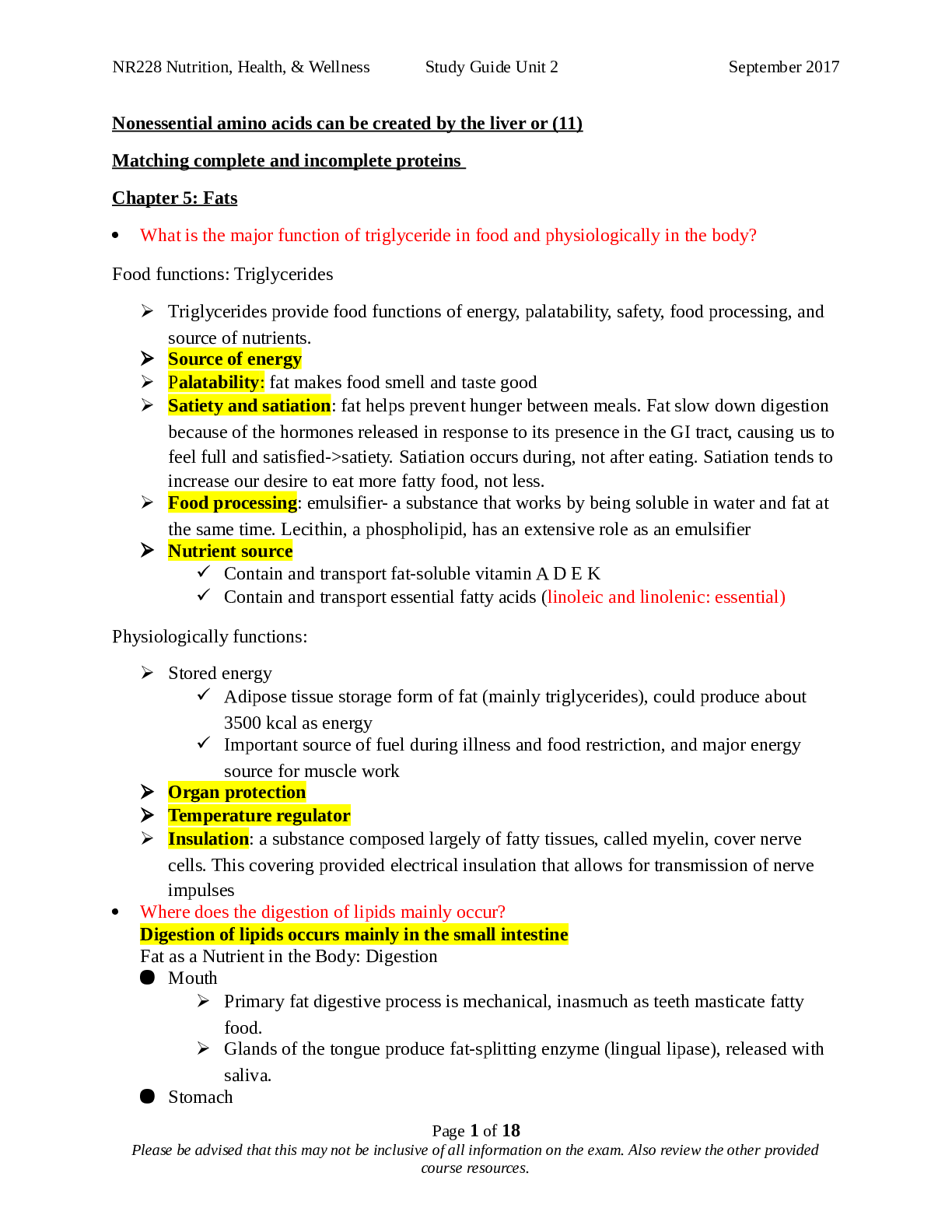Biology > STUDY GUIDE > Study Guide > University of Louisville BIO 240 Ch 8 Intro to Energy Notes (All)
Study Guide > University of Louisville BIO 240 Ch 8 Intro to Energy Notes
Document Content and Description Below
University of Louisville BIO 240 Ch 8 Intro to Energy Notes Section 8.1 Metabolism- totality of an organism’s chemical reaction A metabolic pathway starts when a molecule is changed in ... a series of defined steps, then, produces a specific product; each step is catalyzed by a specific enzyme Metabolism manages the material and energy resources of the cell Catabolism- the breaking down of complex molecules into simpler compounds (cellular respiration) Anabolism- the building up of complex molecules (the synthesis of an Amino Acid) Energy is the capability to cause change Life depends on the ability of cells to transform energy from one form to another Kinetic Energy- the relative motion of an object Thermal Energy (Heat) - the kinetic energy that is associated with random movement of atoms or molecules. Potential Energy- energy that matter possesses because of its location or structure (water behind a dam, above sea level) Chemical Energy- the potential energy that is available for release in a chemical reaction Thermodynamics- the study of the energy transformations that occur as a result in a collection of matter Isolated system- unable to exchange either energy or matter with its surroundings Open system- able to exchange energy and matter with its surroundings 1st Law of Thermodynamics (principal of conservation of energy) states that the energy of the universe is constant 2nd Law of Thermodynamics states that every energy transfer increases the entropy of the universe Entropy is the measure of disorder, or randomness A spontaneous process is one that can occur with no input of energy; this process is able to occur as a result of entropy For a process to occur spontaneously, it must increase the entropy of the universe Section 8.2 (Gibbs) Free Energy- the portion of a system energy that can perform work when temperature and pressure are uniform through a system ΔG = ΔH – TΔS ΔH is the change in the systems enthalpy (total energy) ΔS is the change in a systems entropy T is the absolute temperature in Kelvins If the ΔG is negative then the processes have the ability to be spontaneous Systems with a high G (unstable) will change in a way that will make the system have a lower G (more stable) Equilibrium is achieved when maximum stability is reached When G is at its lowest possible value, in the system Therefore, any change in G will be positive, and therefore not spontaneous Exergonic reaction- a chemical reaction that proceeds with a net release of free energy: G will decrease Endergonic reaction- absorbs free energy from its surroundings: G will increase Section 8.3 A cell does three kinds of work Chemical work- the pushing of endergonic reactions that would not normally occur spontaneously Transport work- the pumping of substances across a membrane against the direction of spontaneous movement Mechanical work- the beating of cilia, contraction of muscle cells, and the movement of chromosomes Energy coupling- use of an exergonic process to drive an endergonic one ATP- creates the majority of the energy used in cells; made up of a ribose sugar, an adenine nitrogenous base, and three phosphate groups Used in energy coupling and to make RNA, among other things The bonds of the phosphate groups can be broken by hydrolysis The breaking of this bond releases 7.2 kcal of energy per mole of ATP hydrolyzed The breaking of the bond results in the ATP becoming ADP The release of energy comes from the chemical change of state to lower free energy The reason ATP is so useful is because it produces so much more energy than other molecules could deliver When ATP is hydrolyzed, it typically releases heat; this is useful in some ways such as the heat released when shivering It is important for cells to be able to transfer this heat into useful energy (chemical, transport, and mechanical) With the help of ATP hydrolysis cells can couple endergonic reactions with the energy released from ATP to make them exergonic This involves the transfer of a phosphate group from ATP to some other molecule (reactant) This reactant with the bonded phosphate group is called the phosphorylated intermediate, which is the key to coupling reactions Transport and mechanical work is almost always powered by ATP [Show More]
Last updated: 1 year ago
Preview 1 out of 5 pages

Reviews( 0 )
Document information
Connected school, study & course
About the document
Uploaded On
Aug 02, 2022
Number of pages
5
Written in
Additional information
This document has been written for:
Uploaded
Aug 02, 2022
Downloads
0
Views
62




-3-168.png)

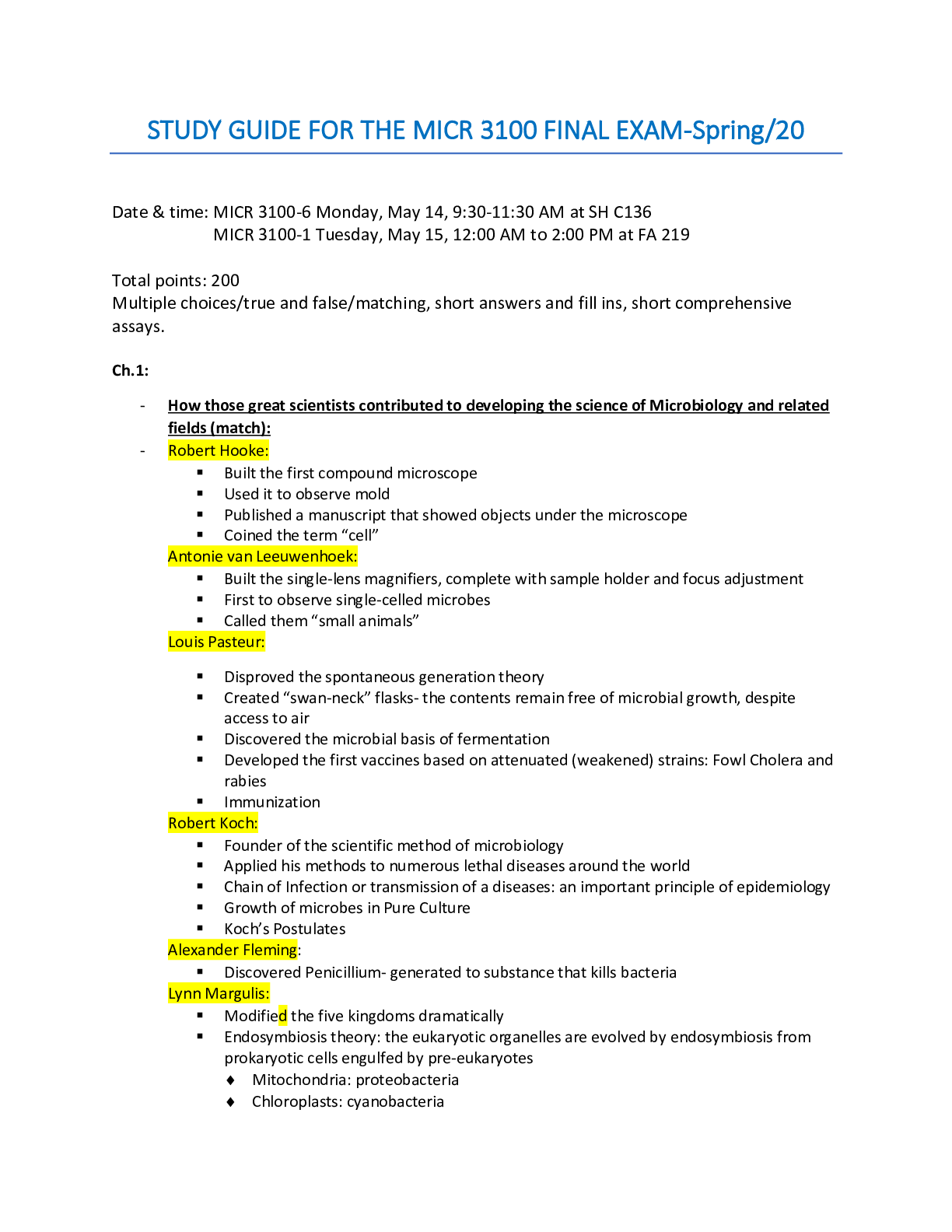


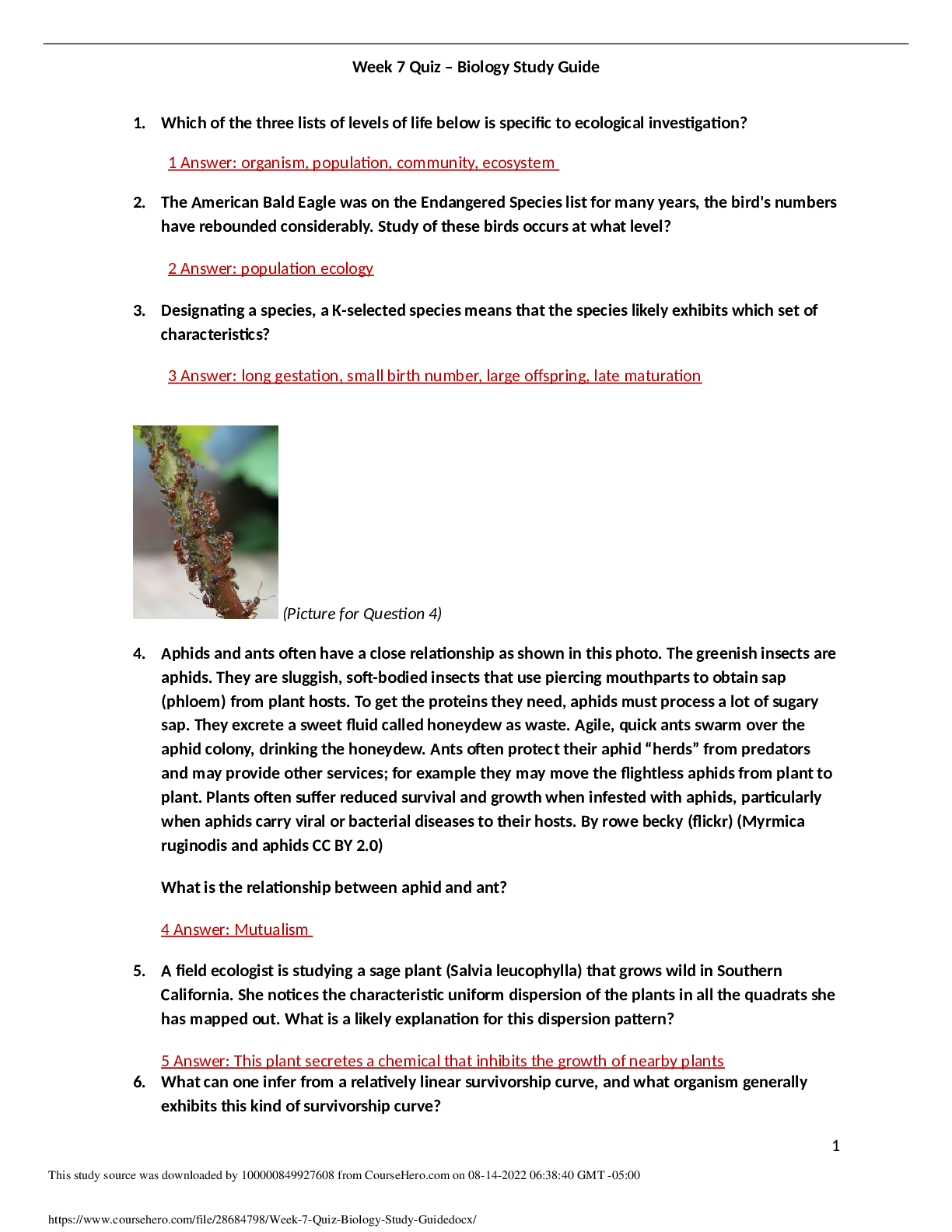



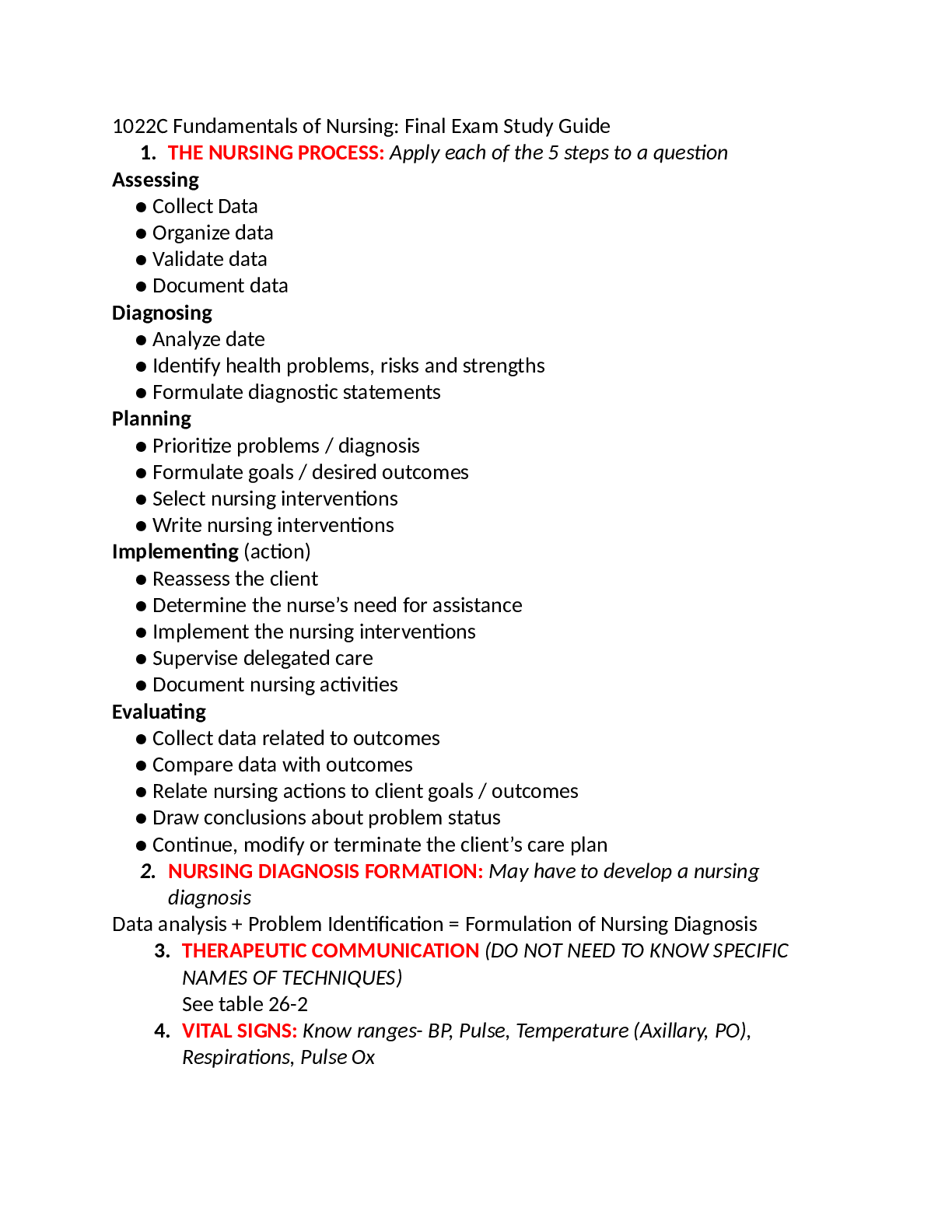
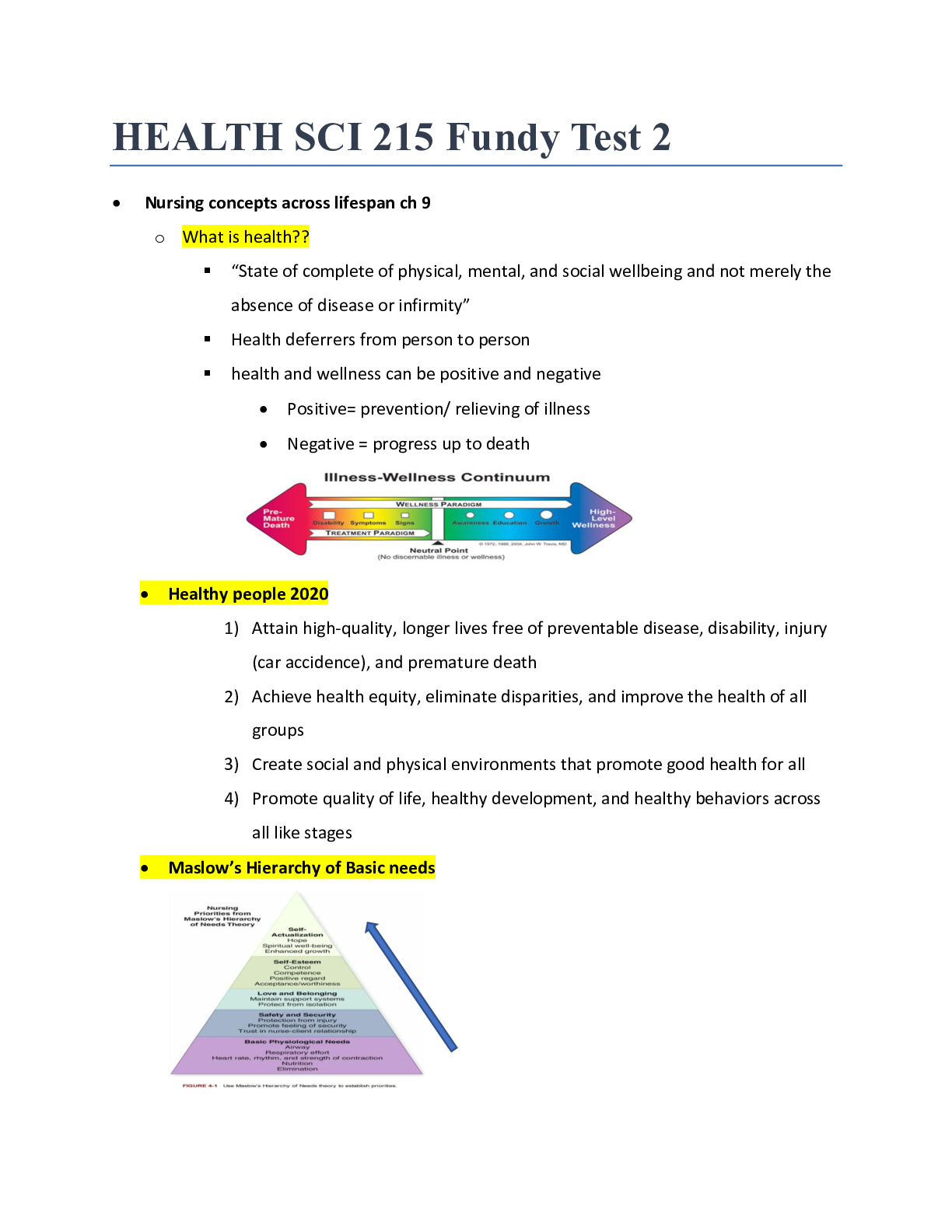

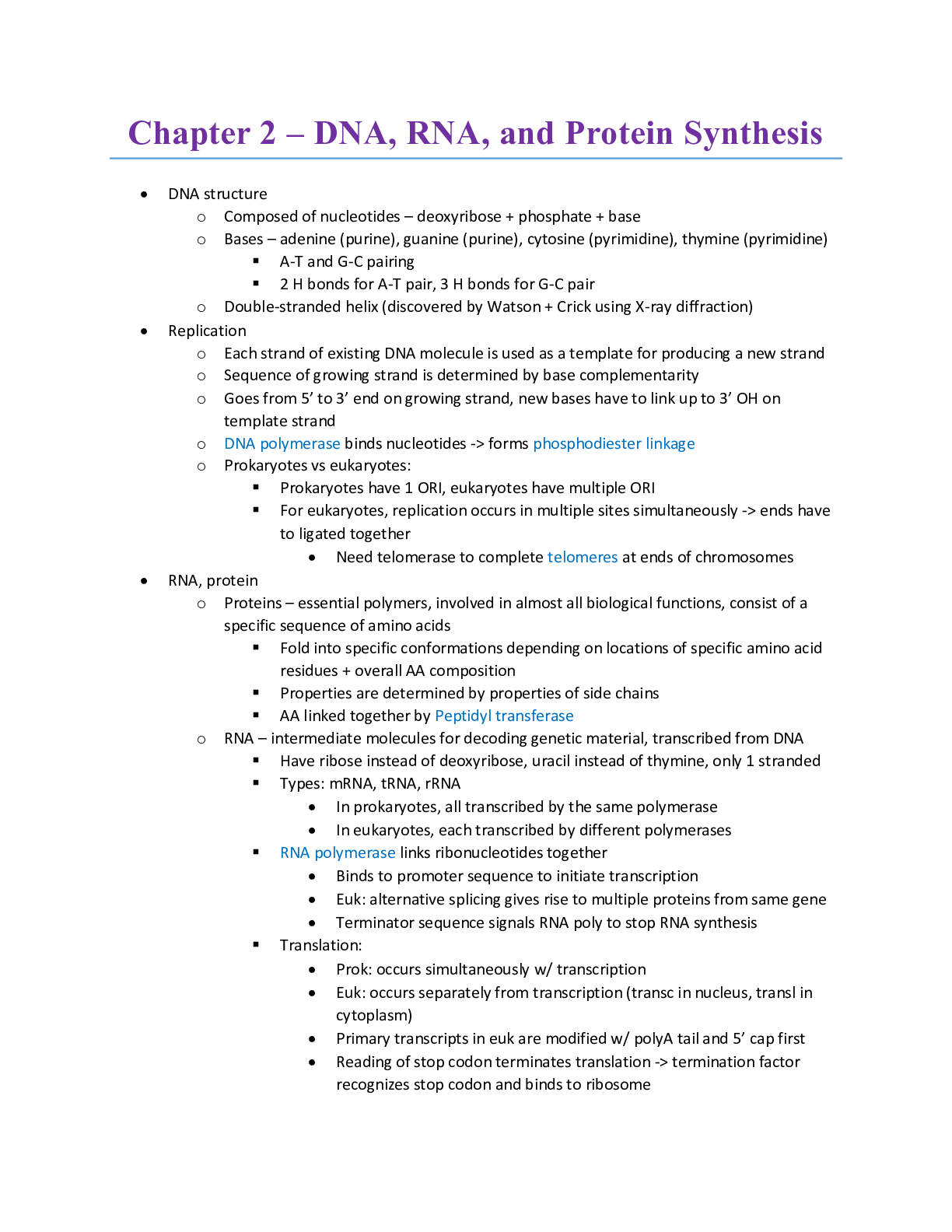
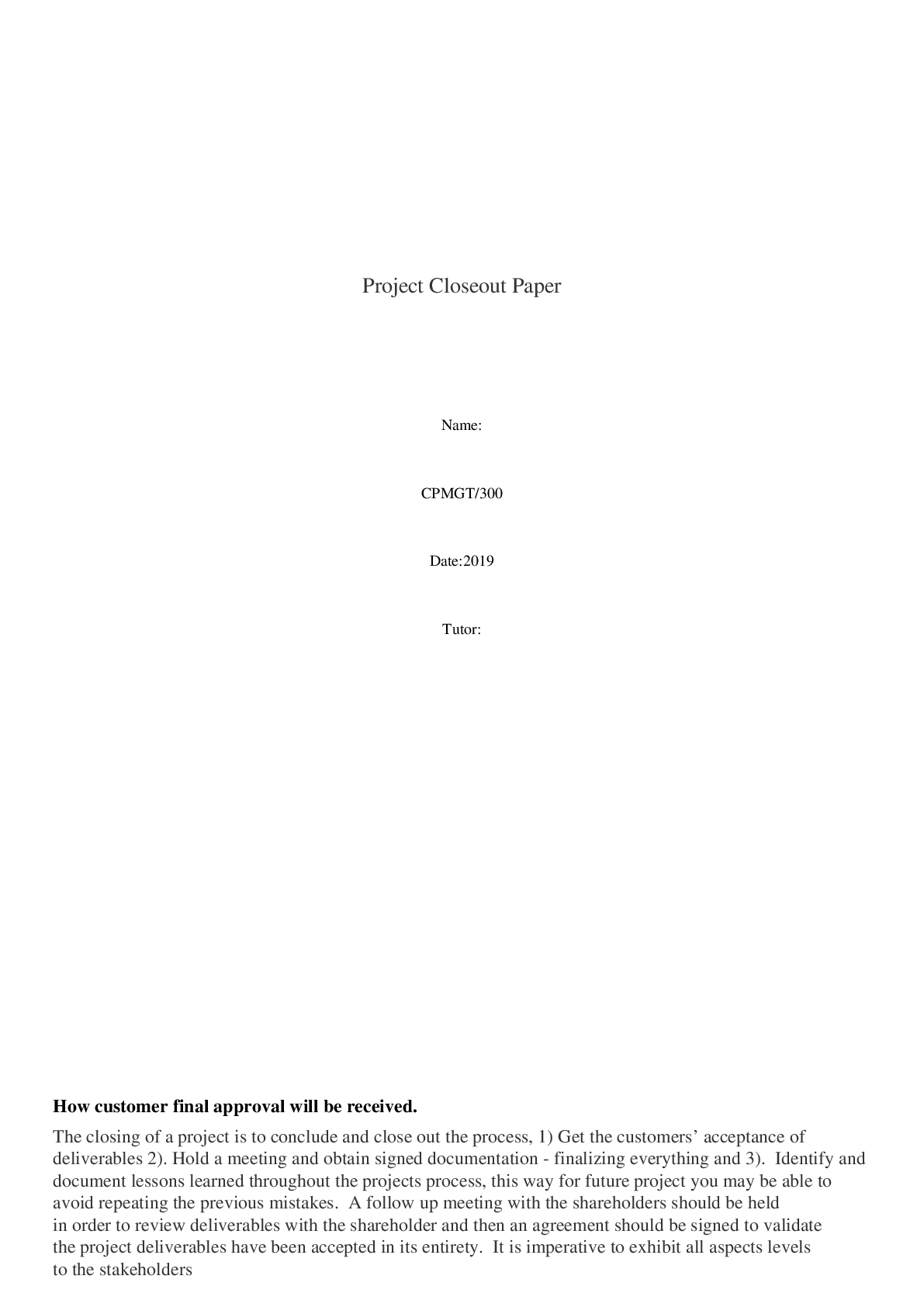






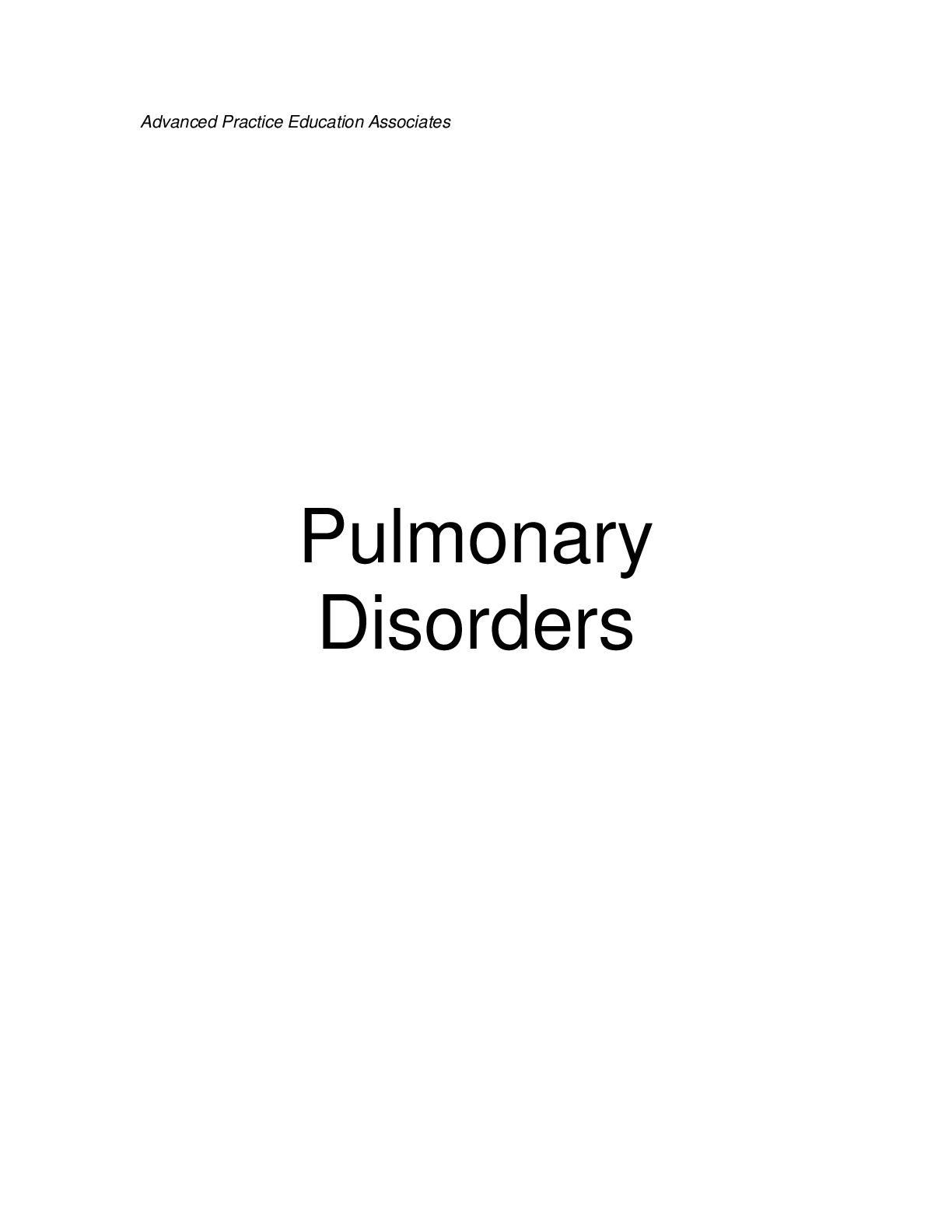
.png)





